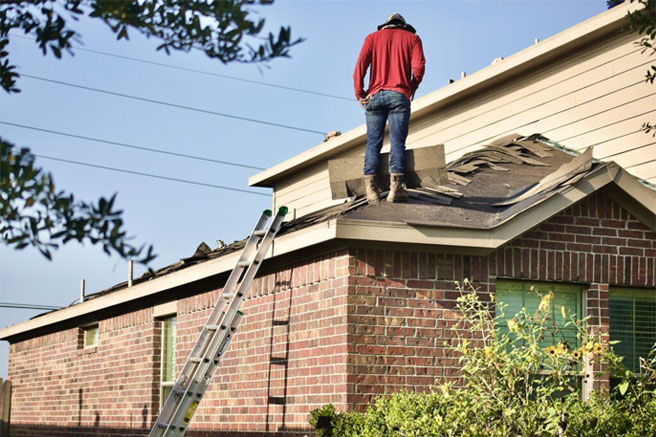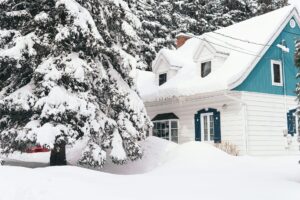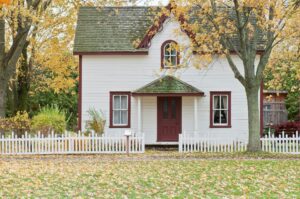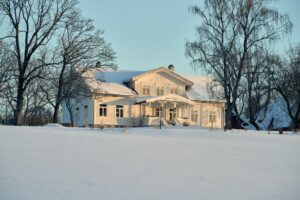Whether you’re planning a new build, preparing to replace an aging roof, or simply looking to stay current with the latest home-improvement developments, keeping up with roofing trends can offer insights that help you combine style, functionality, and value. In 2025, roofing is poised to be about more than just safeguarding your home from the elements. Next-generation materials, sustainability demands, technological innovations, and even design aesthetics are reshaping how homeowners plan and manage roof installations or replacements. Let’s dive into what’s on the horizon and explore how these trends can help you make smarter, more efficient decisions for your home.
Sustainable and Eco-Friendly Materials
Environmental consciousness continues to guide many home-improvement decisions, and roofing is no exception. Driven by homeowner interest and evolving building codes, 2025 will see greater adoption of eco-friendly materials that combine durability with reduced environmental footprints.
Key Developments in Sustainable Roofing
- Recycled Content: Shingles made from recycled rubber, plastics, or reclaimed metals are on the rise. Not only do these reduce landfill waste, but they also frequently meet or exceed the performance of more traditional options.
- “Cool Roof” Technologies: Reflective or highly emissive surfaces designed to minimize heat absorption. According to the U.S. Department of Energy, cool roofs can lower AC usage by reflecting more sunlight and reducing peak cooling demand, especially in hotter climates.
- Natural Materials: Clay tiles, cedar shakes, and slate remain popular in certain regions for their classic look and longevity. While they may require a larger initial investment, many homeowners see long-term advantages—fewer replacements and a smaller environmental impact over the product’s lifetime.
Considerations
- Local Regulations: Some municipalities offer incentives or rebates for installing energy-efficient or sustainable roofing systems. Check local building codes or energy programs.
- Cost-Benefit Analysis: Green roofing materials might command a higher upfront price, but they can deliver savings through lighter utility bills and a more durable, longer-lasting product.
- Maintenance: Materials like cedar shakes require more upkeep to prevent mold or rot, making them best suited for homeowners prepared to handle or schedule regular care.
Rise of Integrated Solar Roofing
Solar energy has been around for decades, but 2025 ushers in a new era of discrete, integrated solar solutions that look and perform remarkably differently from the large-panel installations of yesteryear.
Cutting-Edge Solar Innovations
- Solar Shingles: Designed to mimic conventional asphalt shingles, solar shingles lie flush with the roof surface, providing power generation without large, obtrusive panels.
- Building-Integrated Photovoltaics (BIPV): Some manufacturers now produce roofing systems that incorporate photovoltaic materials seamlessly into metal roofs or tile designs. This approach preserves curb appeal while harnessing renewable energy.
- Battery Storage Synergy: Paired with home battery systems, integrated solar roofs help capture excess energy for nighttime use or emergency backup.
Why It Matters
- Lower Utility Bills: Even modest solar production can trim monthly costs in regions with strong sunlight.
- Environmental Benefits: Tapping into renewable energy reduces a home’s carbon footprint.
- Potential Incentives: Many states and local utilities continue to offer rebates, net metering, or tax credits for residential solar installations. Consult your city or utility provider for the latest programs.
While solar integration remains more typical in sunny climates, improved technology in 2025 is making solar roofing a strong option in more temperate or even cooler locales, provided there is enough direct sunlight throughout the year.
Advanced Roofing Technology and Smart Home Integration
The digital revolution touches nearly every aspect of homeownership, and the roof is no exception. Smart home systems are evolving beyond thermostats and lightbulbs, extending to sensors and monitoring devices specifically designed for roofing.
Examples of Roofing Tech
- Leak Detection Sensors: Placed in vulnerable areas such as the attic or near flashing, these smart sensors can alert you via smartphone or tablet at the first sign of moisture intrusion.
- Temperature and Humidity Monitoring: If your attic has climate-control or ventilation enhancements, sensors can inform you about changes that might stress roofing materials or encourage mold growth.
- Drone Inspections: Homeowners and contractors alike increasingly use drones to conduct routine roof inspections. This approach can quickly identify problem spots—like missing shingles or small punctures—with less risk and time spent on a ladder.
Potential Benefits
- Preventative Maintenance: Quick alerts let you address leaks or temperature anomalies before they develop into costly issues.
- Home Value: Tech-savvy solutions can show you’re invested in longevity and energy efficiency, appealing to potential buyers.
- Reduced Labor Costs: Fewer manual inspections might mean lower ongoing maintenance charges, especially in regions with harsh winter or windy conditions.
Color and Design Trends
While function always tops the list of roofing priorities, homeowners also embrace roofing as a design statement—particularly if they’re upgrading or replacing an existing system. The 2025 roof palette showcases both classic and bolder colors:
Trending Colors and Styles
- Earth Tones with a Twist: Warm terra-cottas, muted grays, and subtle greens remain favorites for blending seamlessly with siding. New versions incorporate slight metallic or matte shimmer for added texture.
- Multi-Tonal Shingles: Manufacturers continue to experiment with shingles that include blended hues—like layered browns or charcoal with silver flecks. These add depth and visual interest without drawing too much attention.
- Architectural Shingles: Thicker shingles with staggered or laminated designs create a dimensional appearance. Many homeowners choose these for high-end curb appeal and improved durability, especially if they live in areas prone to high winds.
Coordinating with Siding, Gutters, and Windows
- Harmonizing Exterior Elements: If you’re also remodeling gutters or siding soon, consider how a new roof color can complement your home’s overall color scheme.
- Margins for Personalization: While neutrals remain popular for resale, bolder homeowners experiment with deep blacks, navy blues, or even tinted metal roofs to stand out.
- Setting the Style: Certain colors and textures mimic classic tile or wood shakes, helping you match a home’s architectural style—be it Craftsman, Traditional, or Modern Farmhouse.
Stronger Storm-Resistant Roofing
With shifting weather patterns and more frequent severe storms worldwide, 2025 roofing trends emphasize resilience. For regions prone to hurricanes, tornadoes, hail, or extreme snowfall, storm-ready roofing is no longer a luxury—it’s often a must.
Performance Upgrades
- Impact-Resistant Shingles: Many manufacturers now offer shingles tested to UL 2218 Class 4 impact standards, which demonstrate high resistance to hail damage.
- Wind Resistance Ratings: Reinforced adhesives and better nailing patterns are pushing wind-speed ratings higher. Some advanced shingles can withstand gale-force conditions up to 130 mph or more.
- Lightweight Underlayment: Synthetic underlayments engineered to resist moisture and tearing for long periods, reducing the likelihood of leaks if shingles are damaged or temporarily lost in a storm.
Navigating Insurance and Codes
- Potential Insurance Discounts: If you install Class 4 impact-rated materials in hail-prone regions, some insurers may offer premium reductions. Check with your provider for details.
- Building Code Requirements: Some coastal areas mandate specific wind or impact-resistance levels. Before installing a new roof, confirm local regulations to ensure compliance and maximum protective benefits.
Focus on Ventilation and Energy Efficiency
Roofing goes beyond the shingle layer; proper ventilation and insulation remain crucial. In 2025, there’s growing attention to synergy between roof design and overall home performance.
Ventilation Best Practices
- Ridge and Soffit Vents: The classic setup of letting cooler air in at the soffits and releasing hot air along the ridge remains the gold standard. This airflow helps keep attic temperatures stable, prolonging roof life.
- Powered Ventilation: Solar- or electric-powered attic fans come into play in extreme heat regions, though experts caution that these must be balanced to prevent drawing conditioned air from inside the home.
- Greater Collaboration: If you’re also upgrading siding or windows, you’ll want a unified approach. Coordinating roofing projects with siding or window replacements ensures consistent insulation and reduces hidden leaks or drafts.
Enhanced Insulation Strategies
Pairing a well-ventilated roof with robust insulation can drastically cut energy use. Proper insulation helps limit heat escaping in winter or entering in summer, reducing reliance on HVAC systems. According to the ENERGY STAR program, well-chosen materials and correct installation can translate into double-digit percentage savings on utilities.
Metal Roofing’s Growing Popularity
Once relegated to barns and industrial buildings, metal roofing steadily increases in residential popularity. By 2025, more homeowners will discover the practicality and design flexibility of aluminum, steel, zinc, or copper roofs.
Why Metal Roofing?
- Extreme Durability: Metal roofs often last 40–70 years with proper care, and many come with warranties reflecting that extended lifespan.
- Reflective Properties: Certain metal coatings deflect solar heat, lowering energy costs for air conditioning—especially in hot climates.
- Color Variety: Beyond plain silver or gray, metal roofing offers an extensive palette, from bold reds to weathered coppers. Painted metal is often fade-resistant and easy to maintain.
- Recyclability: Many metal roofs are made partly from recycled content, and they can also be recycled themselves at the end of their service life.
Practical Considerations
- Noise: Rainfall on a metal roof can be louder if not adequately insulated. Many modern installations include sound-dampening underlayments to address this.
- Upfront Investment: Metal roofs often cost more than asphalt shingles. However, for homeowners seeking a long-term solution, lower maintenance expenses and reduced replacement frequency can offset the higher initial outlay.
Innovative Asphalt Shingle Features
Asphalt shingles remain the most common roofing material in many countries, and 2025 sees manufacturers respond to market demands for improved longevity, style, and environmental considerations.
Asphalt Shingle Trends
- Algae Resistance: More brands are adding copper or zinc granules to combat the black streaks caused by algae growth. Roofs stay cleaner, with fewer mold or mildew issues, particularly in humid environments.
- Enhanced Warranties: As competition intensifies, some shingle lines come with extended or lifetime warranties that protect against manufacturer defects and certain performance issues.
- Architectural Advances: Thicker, multi-layer shingles add dimension and can mimic more expensive shakes or slate, letting budget-minded homeowners achieve a premium look.
Maintenance Considerations
- Periodic Inspections: Even the most advanced shingles require routine checks, especially around penetrations like skylights or vents.
- Gutter Coordination: If you’re replacing the roof, consider upgrading gutter systems or adding gutter guards at the same time. Clear gutters reduce the risk of water backup and potential shingle or fascia damage.
Increased Demand for Professional Craftsmanship
With more sophisticated materials on the market—like integrated solar shingles, multi-layer architectural products, or advanced metal panels—proper installation becomes even more critical. A roof’s performance depends not just on material quality but also on the skill and expertise of the contractor or roofing team.
How to Find Reliable Pros
- Look for Certification: Many roofing manufacturers certify installers who undergo product-specific training.
- Ask About Local Experience: A contractor familiar with your region’s climate understands the specific moisture, wind, or snowfall challenges.
- Written Agreements: Seek detailed contracts outlining materials, scope, timelines, and warranties. This clarity can help you avoid misunderstandings down the line.
- References and Reviews: Always request references or check reputable websites (e.g., the Better Business Bureau) for consumer feedback on local roofing companies.
Future-Focused Skills
Expect the most in-demand contractors to stay updated on continuing education in green construction, solar roofing systems, and emerging technology trends. If a roofer can’t discuss new materials or code requirements with confidence, consider other options to ensure you get a truly modern installation.
Preparing for : Practical Steps for Homeowners
If you anticipate needing a new roof in the next couple of years—or you’re overseeing a larger remodel—here’s how to ensure you’re ready:
- Start Budgeting Early: The average roof replacement cost varies widely based on material choice, roof complexity, and labor. Aim to save more than you think you’ll need so you have room for unexpected costs.
- Research Local Climate Needs: If you get heavy snowfall or fierce summer storms, weigh the benefits of storm-resistant or highly insulating materials.
- Coordinate Upgrades: Combine a roofing project with window replacements, siding work, or gutter installations for a unified approach. This synergy can preserve exterior aesthetics and streamline your home’s efficiency plan.
- Consult Professionals: Gather multiple quotes, paying attention not just to price, but also to warranties, materials, and the contractor’s approach.
- Check Incentives: Look for utility company rebates, local energy-efficiency programs, or homeowner insurance discounts tied to specific types of roofs.
Real-Life Example: A Homeowner’s Journey
Consider a homeowner in a moderate-climate region with a 20-year-old shingle roof. They face rising energy bills due in part to poor ventilation and an aging attic insulation. Upon researching 2025 trends, they decide on a cool roof asphalt shingle with built-in algae resistance, plus they add a solar attic fan for ventilation. The total cost—roughly 15% more than conventional shingles—comes with potential savings through local energy rebates and a sensible payback over about 7 to 10 years.
The result: A more efficient roof that supports comfortable indoor temperatures, reduced utility expenses, and an extended product warranty. Five years later, they’re still enjoying those benefits without the typical headaches of algae stains or worn shingles.
Additional Resources
- NRCA (National Roofing Contractors Association) – Standards, best practices, and educational resources.
- Energy.gov’s Roofing Efficiency Guide – Insights into cool roofs, energy savings, and rebate opportunities.
- U.S. EPA Heat Island Effect Page – Information on how certain roofing materials impact local temperature and air quality.
Final Thoughts
As we move deeper into 2025, roofing is no longer a simple, one-size-fits-all affair. Between the push for sustainability, the rise of integrated solar, more robust storm resistance, and the seamless merging of tech into home systems, roofing has become an essential facet of any forward-thinking home-improvement plan.
This new generation of roofing materials and techniques benefits not just the environment but also your wallet—often paying dividends through lower energy costs, reduced maintenance, and stronger defense against storms or extreme weather. Ultimately, the right decision blends your home’s architectural style, local climate realities, and a budget that accounts for long-term value. By exploring modern materials, partnering with knowledgeable roofing contractors, and thinking about ventilation and insulation as part of the same equation, you can tap into the latest roofing trends and enjoy a roof that stands the test of time.




